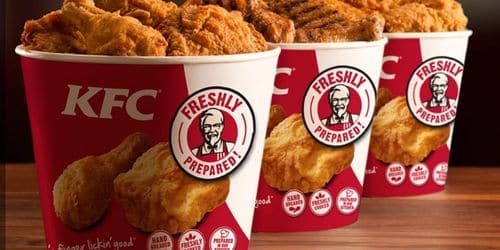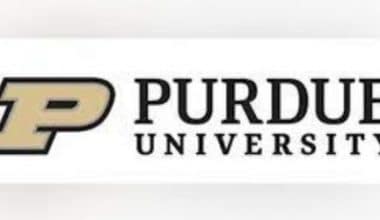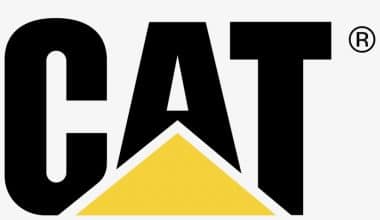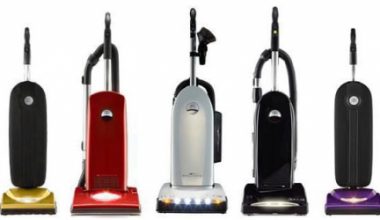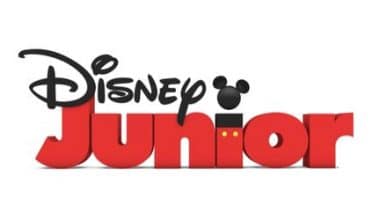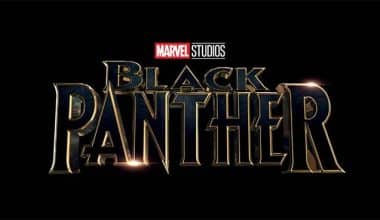Kentucky Fried Chicken (KFC) is famous around the world for its fried chicken. The KFC brand and logo have crispy on the surface and juicy on the inside history, as represented by the face of an old guy with a white beard.
The journey began in the 1930s when a man named Harland Sanders refused to give up in the face of adversity and became a multi-millionaire by the time of his death in the 1980s by successfully developing the world’s most popular fast-food chain – KFC. Let’s delve into the rich history and hidden secrets of KFC – the world-renowned fast food brand.
History and Life of The KFC Founder – Harland Sanders (1890-1980)
KFC History: Harland Sanders and His Various Jobs
Harland Sanders was born in Henryville, Indiana in 1890. His father died when he was five years old, forcing his mother to work. While she was at work, Harland looked after his two siblings and cooked meals for them. His mother remarried when he was 12 years old. However, his stepfather was opposed to having stepchildren.
So, after a year, he moved out.
He began working on a farm. He fed the animals in the morning, went to school, and did odd jobs in the evening every day.
Sanders dropped out of school in the seventh grade because algebra was too difficult for him.
In the years that followed, he tried his hand at a variety of jobs, including working as a –
- conductor of a streetcar
- insurance agent,
- a railroad firefighter,
- the operator of a steamboat,
- a tire vendor, and
- lawyer.
He also tried other jobs but was not successful in any of them.
KFC History: Sanders’s First Breakthrough in 1930.
Sanders acquired a job running a petrol station in Corbin, Kentucky, in 1930.
He cooked and served food to his customers to supplement his income. He offered fried chicken and other childhood favorites here.
People from all over came to taste his cuisine as news spread about his cooking. Because his chicken was so popular, he finally removed the petrol pumps and transformed the gas station into a full-fledged restaurant.
The governor of Kentucky bestowed upon him the title of Kentucky Colonel in 1936.
By 1937, he had expanded the business to include a hotel and a café, Sanders Courts & Cafe, with seating for around 142 people.
It took around 30 minutes to cook fried chicken, which was a huge issue for Sanders because fried chicken was his best-selling menu item.
To solve this issue, he utilized a pressure cooker instead of deep-frying the chicken, reducing the cooking time to 8-9 minutes.
This assisted him in selling more fried chicken.
He kept experimenting with his chicken recipe. He ultimately refined the fried chicken recipe in 1938. The recipe comprised 11 herbs and spices that are still kept secret by KFC today.
“I mixed two handfuls of it into the flour with the rest of my seasonings.” When I fried it up, it was the finest chicken I’d ever had. And I’ve never modified my ingredients since then.” – an excerpt from his memoirs.
He extended his business once more, this time in Ashville, North Carolina, by opening another Sanders Court & Café. A fire damaged a restaurant in Corbin in 1939. When it was rebuilt, World War II had broken out, limiting its consumer base, which was primarily made up of visitors. He quickly sold his Ashville location.
KFC History: Sanders restaurant was closed in 1955.
His business struggled on and faced another setback in 1955. An interstate bypass was created on the roadway, reducing the number of people that used it.
Sanders was eventually forced to sell his Corbin property.
He was 66 years old and had to make do with a $105 monthly social security payment.
But it turned out to be a blessing in disguise. Sanders had another idea: franchise his Kentucky Fried Chicken recipe. He had previously created the groundwork when he successfully licensed his formula to Pete Harman in 1952.
Don Andreson, a sign painter employed by Harman, came up with the term “Kentucky Fried Chicken.”
He loaded up his car with pressure cookers and a blend of 11 herbs and spices and set out across the United States.
He traveled across the country, stopping at eateries along the way to offer samples. Sanders arranged franchise deals with restaurant owners after they sampled the samples, which normally included a $0.04 commission on every piece of chicken sold. He offered to teach them how to create it in exchange. By 1963, he had signed his first franchise agreement with a restaurant in Utah, and there were 600 Kentucky Fried Chicken restaurants across the United States.
But the company was too large for Sanders to handle at his age.
At what age did KFC start?
Colonel Harland Sanders began franchising his chicken business at age 65 with his monthly Social Security payment of $105
KFC History: 1964 Acquisition Transaction
Many others tried to buy KFC from Sanders, and in 1964, Harland Sanders sold KFC to a group of investors led by John Y. Brown and Jack C. Massey for US$ 2 million. He sold it on the condition that quality is maintained at all times, that he earns a lifetime salary, and that he remains the company’s face.
“Many people have questioned me why I sold my business after putting everything I had into it.” The solution looks like this. When Brown first became interested in Kentucky Fried Chicken, the success of my concept was beginning to wash over me. “My business was becoming too large for me, no matter how much energy and effort I put into it,” he writes in his book.
KFC History: PepsiCo purchased KFC in 1986.
By 1970, the number of outlets had risen to 3000 in 48 countries. Brown sold KFC to Heublein, a food packaging, and beverages company, for $285 million in 1971. Harland Sanders passed away in 1980. At the time of his death, there were 6000 KFC locations in 48 different countries.
R.J. Reynolds, a tobacco conglomerate, purchased Heublein in 1982 and sold KFC to PepsiCo in 1986 for $850 million.
Many new items were introduced after the company was acquired by PepsiCo.
In 1991, the name “KFC” was officially adopted.
PepsiCo split out its restaurant business, which includes KFC, Taco Bell, and Pizza Hut, into Tricon Global Restaurant Inc. in 1997. In May 2002, the combined firm relaunched as Yum! Brands.
Controversies
Large fast-food corporations are no strangers to controversy. In 2014, a myth reappeared on the internet claiming that KFC was not using chicken for flesh but rather was creating some form of mutant chicken in order to get more meat from one such chicken. This rumor was later debunked.
Pamela Andreson, an animal rights activist, revealed what goes into creating a KFC bucket in 2008. She attacked KFC for animal cruelty alongside People for the Ethical Treatment of Animals (PETA). So, KFC responded by noting that they take every measure to avoid animal abuse.
KFC has faced numerous controversies and continues to do so to this day.
KFC in the Twenty-First Century
To stay up with the times, KFC has added a range of meals to its menu. To appeal to a wider audience, countries such as India have produced a variety of vegetarian dishes. Similarly, KFC has tailored its cuisine to the country in which it operates.
KFC now has 22,600 locations in 135 countries, with a brand value of $8.3 billion and sales of $27.9 billion as of July 27, 2020. KFC’s brand value is ranked 96th in the globe. (Jordan-anwar)
The company is also experimenting with plant-based meat and aiming to boost its expansion through the use of new technology.
Why is KFC so successful?
KFC was successful because it built an original brand with a recognized name and distinct recipes so that customers could always anticipate high-quality food at their restaurants.
Sanders’ 8 Unknown Facts
#1. Sanders’ first restaurant was located inside a petrol station.
In 1930, Harland Sanders began serving meals to truck drivers at an old family dining room table brought into the front of his Corbin, Kentucky, service station because fried chicken took too long to prepare.
However, his country ham and steak dinners were so popular that he quickly built Sanders’ Café across the street and began serving chicken fried in an iron pan. Duncan Hines mentioned the eatery in his 1935 road-food guide, and it was there in 1939 that the colonel perfected his quick-frying chicken covered in his secret formula of 11 herbs and spices using pressure cookers.
#2. In a fatal shootout, he injured a business competitor.
Sanders was a fiery fighter who refused to back down from a battle, which served him well in the rough-and-tumble “Hell’s Half-Acre” neighborhood that surrounds his Shell Oil gas station. When the future fast-food conglomerate put advertising signs on barns for miles around, it irritated Matt Stewart, who ran a nearby Standard Oil gas station.
Sanders hurried to the scene with two Shell executives after being informed that Stewart was painting over one of his signs for the second time.
Stewart replaced his paintbrush for a revolver and fatally murdered Shell district manager Robert Gibson, according to Josh Ozersky’s book Colonel Sanders and the American Dream. Sanders retaliated by shooting Stewart in the shoulder. Stewart received an 18-year prison sentence for murder, but accusations against Sanders were dropped following his arrest.
#3. Sanders was an honorary colonel in the military.
Sanders, who lied about his birth date in order to join the U.S. In 1906, joined the army and spent several months in Cuba before being honorably discharged. Kentucky Governor Ruby Laffoon issued a ceremonial order naming Sanders an honorary colonel in 1935. Sanders accepted a second honorary appointment in 1949 and sought to look the part by growing facial hair and donning a black frock coat and string tie. Soon after, the colonel changed into a white suit to assist disguise the flour stains and bleached his mustache and goatee to match his white hair.
#4. Before making it big in fast food, the colonel delivered babies and practiced law.
Sanders had a diverse resume before achieving success in the fried-chicken industry in his 60s. He began his career as a farmhand and streetcar conductor before working for railroad firms throughout the South.
Sanders studied law by correspondence and practiced in Arkansas justice-of-the-peace courts, aspiring to be the next Clarence Darrow, until a courtroom battle with a client destroyed his legal career.
Also maintained a steamboat ferry that sailed between Kentucky and Indiana on the Ohio River, and he marketed life insurance and automobile tires. Sanders even delivered babies while in Corbin. Sanders noted in his memoirs, “There was nobody else to do it.” “When their wives were pregnant, the men couldn’t afford to see a doctor.”
#5. Utah was the location of his first Kentucky Fried Chicken franchise.
In an unusual location—Salt Lake City, Utah—the colonel’s fried chicken first became a fast-food hit. Pete Harman, a Sanders acquaintance who owned one of the city’s major restaurants, became the colonel’s first franchisee there in 1952. According to Ozersky, the Harman restaurant invented the distinctive bucket container and coined the phrase “Kentucky Fried Chicken.” What we now associate with global fast food was a regional specialty on a menu in 1950s Utah.
Sanders was 65 years old and living on a $105-a-month Social Security payment when he founded Kentucky Fried Chicken and began driving around the country signing up new franchisees in his 1946 Ford.
#6. The colonel sued Kentucky Fried Chicken for $122 million after selling the company.
Sanders sold Kentucky Fried Chicken in 1964, and after food conglomerate, Heublein purchased the company in 1971, the cantankerous colonel began to deride the chain’s gravy as “slop” and its owners as “a bunch of boozehounds.” Although he was still the company’s public face, Sanders despised Kentucky Fried Chicken’s food so much that he developed plans to franchise “The Colonel’s Lady’s Dinner House,” which he opened with his wife in Kentucky Sanders filed a $122 million lawsuit after Heublein threatened to halt the plan.
The two sides reached an out-of-court settlement, with Sanders receiving $1 million and the opportunity to give Heublein executives a culinary class in exchange for his vow to stop criticizing Kentucky Fried Chicken’s food. The renamed “Claudia Sanders Dinner House” was permitted to remain open and is currently in business.
#7. Sanders swore like a pirate.
Although the colonel appeared to be the ideal of a Southern gentleman, his language was notoriously salty, especially when he was dissatisfied with the quality of cuisine given by franchisees.
According to a 1970 New Yorker profile, “the Colonel is famed among KFC people for the force and diversity of his cussing.” Sanders admitted, “I used to cuss the prettiest you ever heard.” “I used to cuss in front of women and other people, but nobody ever took offense.”
#8. The colonel is said to have cursed a Japanese baseball club.
According to legend, Sanders cursed the Hanshin Tigers when the baseball team’s ecstatic fans celebrated a 1985 title by hurling his statue, which was stolen from a local Kentucky Fried Chicken store, into an Osaka river. The squad’s subsequent championship drought was attributed to the “Curse of the Colonel,” but even the statue’s rescue from the muddy river bottom in 2009 has yet to result in another championship for the team.
The Unknown Secrets of KFC’s Success
The timing factor is critical to KFC’s success. When customers go to restaurants, they usually expect to obtain their food as soon as possible. Sandlers utilized the pressure cooker to prepare food faster. It also makes meals more sanitary and tasty. Colonel Sanders created the recipe for fried chicken. As a result, it is the KFC franchise’s copyright.
Any other sort of chicken cannot compete with the flavor of KFC’s fried chicken. This recipe is not transferable to another franchise. Another factor that has contributed to KFC’s growth is the franchise structure that is used by KFC outlets all over the world. Every restaurant has a set of rules and regulations that must be observed at all costs. The following are some of the documentation’s rules:
- The chicken must be cooked in a pressure cooker. Other utensils should not be used.
- In addition, after cooking the chicken, it should be left in the cooker for around 15 minutes.
- Every piece of chicken is the same size and weight. It should be about 8cm wide and 300 grams in weight.
- The chicken that will be utilized the next day must have been marinated overnight.
- The chicken’s age is set at 60-70 days. All of these guidelines have proven to be the primary cause of KFC’s success.
KFC offers job chances to deaf people. Even at some KFC locations, deaf employees are taught to read lips movements. It makes it much easier for deaf people to work and earn a living.
The Meaning and History of the KFC Logo
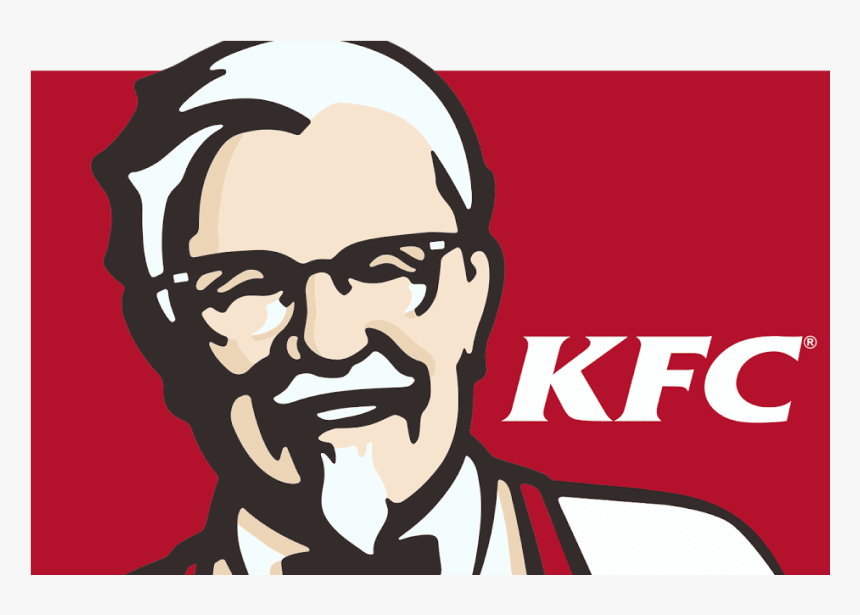
Lippincott & Margulies designed the first KFC logo in 1952. Colonel Sanders’ stylized visage, the founder of the fast food restaurant, has been an integral aspect of the company’s identity since that time. It was a black and white logo. The restaurant’s name, “Kentucky Fried Chicken,” is included in the symbol as is.
Colonel Sanders was given a makeover in 1978. The work was completed by the same firm, Lippincott & Margulies. Colonel’s smile changed slightly, and he received a new haircut. There was another “Kentucky Fried Chicken” writing next to the face, this time in a different font.
What is the Identity of the Man In The KFC Logo?
Colonel Sanders, who appears on the KFC logo, is not a fictional figure, but rather the company’s founder, Colonel Harland Sanders.
Only in 1991 did the now-famous abbreviation “KFC” become a part of the logo. According to some sources, the corporation sought to get rid of the word “fried” because it connoted an undesirable eating option. The red hue was added to the logo, along with a horizontal gradient. The red stripes were added to the mansard roofs of restaurants the same year.
KFC Logo 1952 – 1978
The original KFC logo, created in 1952, included a wordmark, Kentucky Fried Chicken, which is a hand-drawn typeface with enlarged first letters “K”, “F”, and “C”.
The KFC symbol, a portrait of Colonel Sanders, was placed on the fight of the wordmark.
The monotone color scheme makes the logo look ageless and sophisticated.
KFC Logo 1978 – 1991
The initial logo update in 1978 moved the insignia to the left side of the wordmark, which was now written in three stories with bigger font. The “K” elongated tail is the fundamental element of the updated typeface.
KFC Logo 1991 – 1997
Kentucky Fried Chicken’s name is changed to KFC, and the logo is drastically altered. The hue first appears in the KFC visual identity in 1991.
The Colonel’s portrait is now done in blue and white, making it appear more lively and pleasant.
A red rectangle is placed on top of the wordmark in bold red writing.
The new KFC logo is vibrant and eye-catching, signifying a strong and energetic brand with huge aspirations and ambitions.
KFC Logo 1997 – 2006
Landon Associates, a design firm, recreated the KFC logo in 1997. It is now a square symbol with a red and white backdrop and the Colonel’s picture and the KFC wordmark in red on his tuxedo.
When the business obtained this logo, it made numerous adjustments to the inside and outside design of its restaurants. The mansard roof was replaced with a flat roof, and the tower became thicker.
KFC Logo 2006 – 2018
The logo was changed again in 2006. It is now a deep crimson circle with a polished image of the Colonel wearing an apron rather than a tuxedo.
The white KFC wordmark is placed to the left of the Colonel’s visage.
During this time, the company also employs a monochrome version of the insignia as a nod to the original logo from 1952.
KFC Logo 2014 – 2018
The KFC logo from 2014 contained all of the traditional components, but with a monochrome color palette and with few additional accents. The portrait was placed directly over the KFC wordmark, with no framing or solid background.
KFC Logo 2018 – Today
The KFC logo was last updated in 2018. The portrait was retouched and the shape was modified to a trapeze. Three vertical lines run over the white and red background. The Colonel’s visage is contoured in black and set atop the white line, with the KFC italics wordmark beneath it.
The KFC logo is bright and friendly; it is an excellent choice for the fast-food industry, evoking feelings of warmth and friendliness.
KFC Logo Font
Since 1991, the simple italic font used for the “KFC” lettering in the present logo has been used. The font used for the “Kentucky Fried Chicken” statement has been altered several times, becoming increasingly minimalistic.
KFC Logo Color
Since the 1991 iteration of the logo was created, the color scheme (red, black, and white) has mostly remained the same. However, if you look closely at the latest logo, you will notice a variation in the shade of red used: it has become darker and less dazzling.
How is KFC using technology to prepare for the future?
KFC has never been a brand that has rested on its laurels. Since its inception, the latest technology has been sought to keep them ahead of the competition.
KFC just revealed that they are testing plant-based “chicken” to add to their menu selections in Atlanta, Georgia. Customers will be given the opportunity to provide input on a free sample basis by collaborating with Beyond Meat, a plant-based protein company.
In recent years, they have also experimented with cryptocurrencies. Customers in Canada have been able to purchase “The Bitcoin Bucket” through KFC’s website since January of last year.
KFC’s success is due to more than simply the high quality and flavor of its cuisine. Since the early 1950s, one of their ace cards has been marketing. KFC stated in 2017 that they would launch a Chicken Sandwich into space, which was a wonderful bit of public relations.
However, their embrace of technology has also extended to staff training. Voice-activated gadgets, social networking, and VR coding are assisting them in improving the abilities of their personnel.
Franchises in China are also experimenting with facial recognition to aid in the creation of “smart eateries.” The goal is to remember a customer’s past selections and provide customized options when they return.
What Made KFC Change Its Name?
Kentucky Fried Chicken was officially marketed as KFC in 1991. But why is that?
The cause, as it turns out, was rather commonplace, although there are numerous ideas as to why this occurred.
According to one explanation, there was an issue with the company’s name, which included the word “chicken.” There were reports at the time that KFC was employing “mutant” chemically engineered chickens, but this was eventually proven to be “false news.”
Other hypotheses circulated, such as the company’s intention to erase all references to the term “fried” in order to avoid offending health-conscious customers.
The underlying explanation, though, is significantly less spectacular. They merely desired to abbreviate the name.
KFC is much quicker to say, and customers were already using it as a brand shorthand. However, this hasn’t stopped additional rumors from spreading on the internet.
We’ll let you determine what the real reality is. Just keep Occam’s Razor in mind: “the simplest answer is usually the correct one.”
What Caused KFC to Change Its Slogan?
Peter Harman, Sanders’ first franchisee, coined KFC’s iconic tagline “It’s Finger-lickin’ good.” This, he believed, helped him stand out from his competitors.
In the late 1950s, Harman also popularized the now-famous “bucket supper.”
However, as you are probably aware, this tagline was dropped in 2011 in favor of “So good!”
What’s the reasoning? KFC wants to adapt its marketing to become more health-conscious, according to a Telegraph piece from the period.
After all, fried food is hardly the healthiest option.
The relocation coincided with certain adjustments in the way they cook and package their meals. Calorific information was added to their packaging, and new Brazer alternatives were added to their menu.
This allowed KFC to offer griddled, rather than fried, meal alternatives on their menu. These options include burger and tortilla-style wraps that are lower in calories, salt, and fat than typical KFC offerings.
Conclusion
Hopefully, your questions about the history of KFC, concrete secrets to its success, and current status have been dispelled. We may now conclude that Colonel Harland Sanders was one of the individuals who successfully dealt with his depression. Even at the age of 62, he established a fantastic grocery store that no one can match today.
Kentucky Fried Chicken (KFC) is a well-known restaurant in the area, and the narrative of KFC’s triumph is inspiring. KFC’s chicken is distinct from other stores’ chicken, and when consumers hear the word chicken, they immediately think of KFC. The KFC motto is extremely fitting because after eating KFC’s chicken, we lick our fingers because it is delicious!
- RESTAURANT MARKETING: What You Should Know and Strategies
- ADVERTISING CAMPAIGN: Definition and Best 20 Campaign Examples and Ideas.
- POULTRY BUSINESS: Beginners’ Guide to Launch a Lucrative Poultry Business
- Rye Whiskey Brands: Best 21 Rye Whiskey Brands In The World
- RESTAURANT MANAGEMENT SYSTEM: Guide to Effective Restaurant Management
